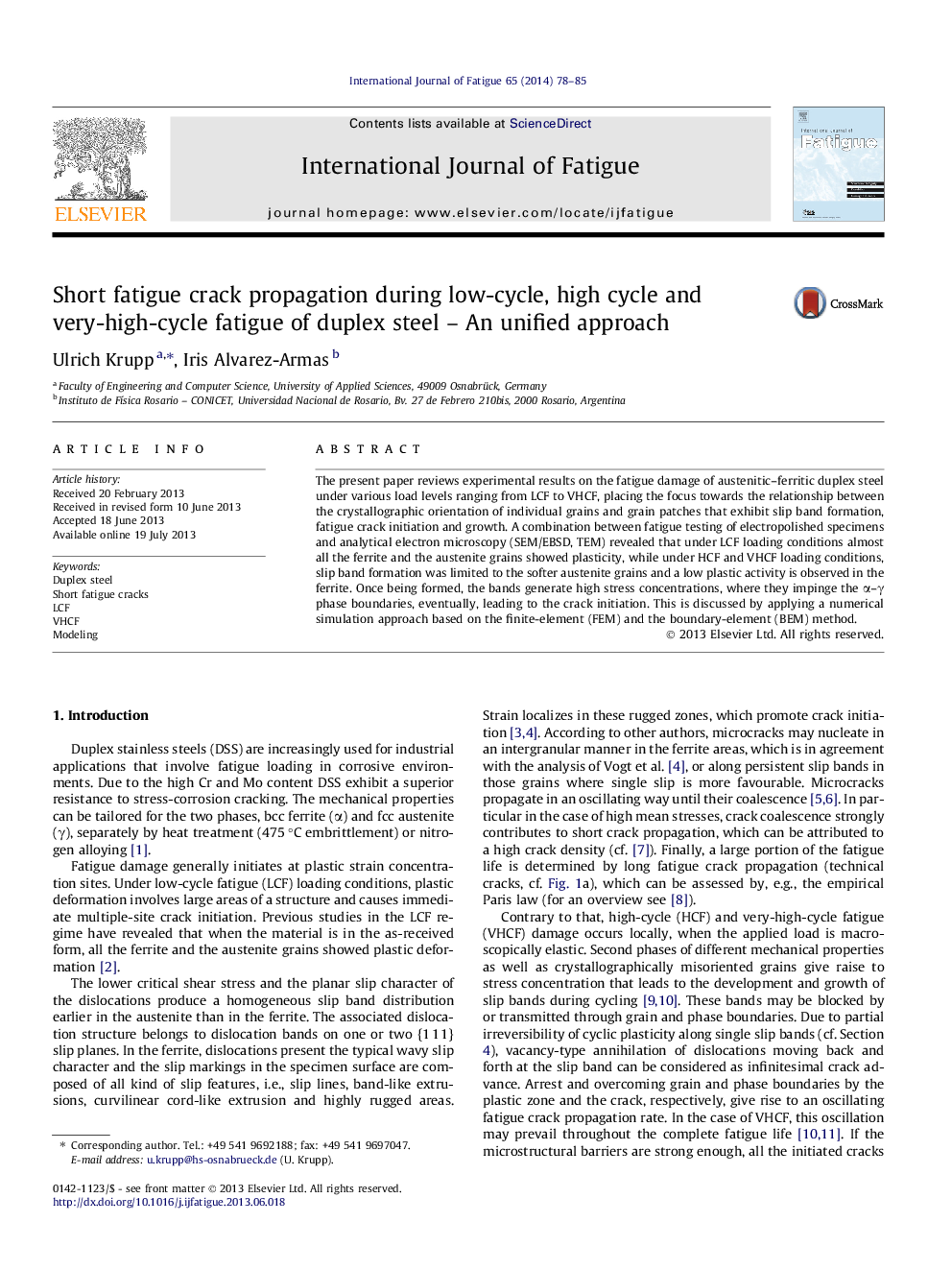| Article ID | Journal | Published Year | Pages | File Type |
|---|---|---|---|---|
| 777620 | International Journal of Fatigue | 2014 | 8 Pages |
•Short fatigue crack growth in DSS is governed by crystallographic misorientation.•Ferrite embrittlement results in high barrier strength between the phases.•Strain localization in the ferrite is a gradual process.•Cracks are simulated numerically accounting for cyclic irreversibility.
The present paper reviews experimental results on the fatigue damage of austenitic–ferritic duplex steel under various load levels ranging from LCF to VHCF, placing the focus towards the relationship between the crystallographic orientation of individual grains and grain patches that exhibit slip band formation, fatigue crack initiation and growth. A combination between fatigue testing of electropolished specimens and analytical electron microscopy (SEM/EBSD, TEM) revealed that under LCF loading conditions almost all the ferrite and the austenite grains showed plasticity, while under HCF and VHCF loading conditions, slip band formation was limited to the softer austenite grains and a low plastic activity is observed in the ferrite. Once being formed, the bands generate high stress concentrations, where they impinge the α–γ phase boundaries, eventually, leading to the crack initiation. This is discussed by applying a numerical simulation approach based on the finite-element (FEM) and the boundary-element (BEM) method.
